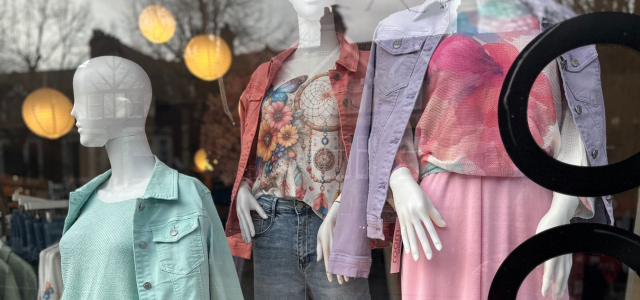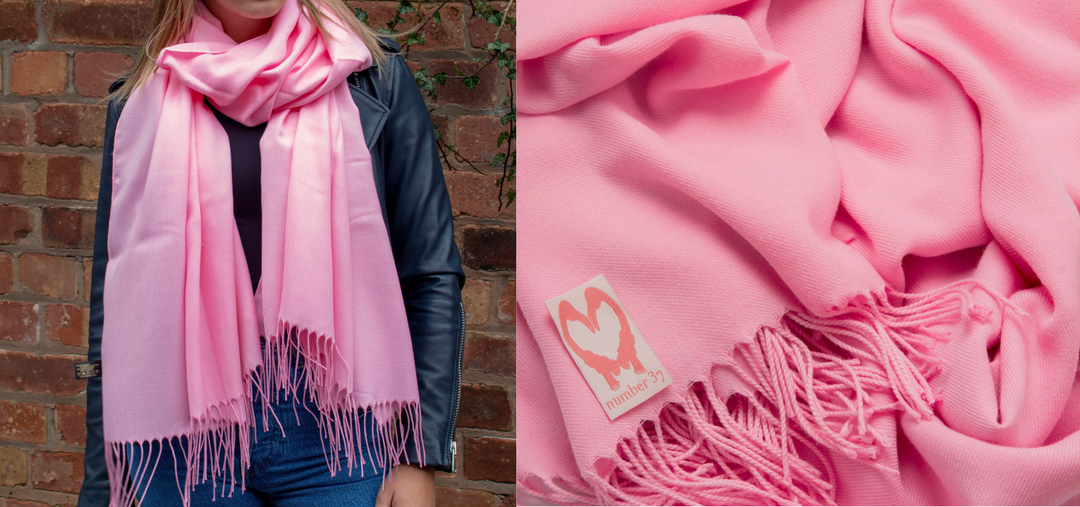The Evolution of Handbags: A Journey Through History
The Evolution of Handbags: A Journey Through History
### Introduction
Handbags are more than just accessories; they are an integral part of fashion and functionality, serving as a reflection of cultural and societal changes throughout history. From humble pouches to iconic luxury items, handbags have evolved significantly over the centuries. This blog post explores the fascinating history of handbags, tracing their development from ancient times to the modern era.
### Ancient Origins
The history of handbags dates back to ancient times, where early humans used simple pouches made from animal hides or plant fibers to carry essential items. These primitive bags were functional, designed to hold tools, food, and other necessities. As civilizations developed, so did the complexity and craftsmanship of bags.
1. **Ancient Egypt:**
- **Hieroglyphics and Artifacts:** Archaeological findings and ancient Egyptian art depict men and women carrying small pouches attached to their belts. These bags were often adorned with intricate designs and symbols, indicating their importance in daily life and religious practices.
2. **Ancient Greece and Rome:**
- **Belt Pouches:** In ancient Greece and Rome, both men and women used belt pouches known as "pockets" to carry coins and small personal items. These pouches were often made of leather and were essential for travel and trade.
### The Middle Ages: Functionality and Fashion
During the Middle Ages, the concept of personal bags began to evolve. The use of handbags expanded beyond mere functionality to include elements of fashion and social status.
1. **Medieval Europe:**
- **Drawstring Pouches:** Known as "purses" or "girdle pouches," these bags were attached to belts and used to carry money, keys, and other small items. They were often decorated with embroidery and beads, reflecting the wearer's wealth and status.
2. **Reliquaries and Religious Bags:**
- **Pilgrim's Bags:** During religious pilgrimages, travelers carried small bags known as "scrips" to hold food, water, and relics. These bags were symbolic of the journey and were often blessed by religious leaders.
### The Renaissance: Birth of the Modern Handbag
The Renaissance period marked a significant shift in handbag design and use. With the rise of fashion and individualism, handbags became more elaborate and diverse.
1. **Italy and France:**
- **Elegant Reticules:** The Renaissance saw the emergence of reticules, small drawstring bags often made from luxurious fabrics such as silk and velvet. These bags were carried by women and were used to hold personal items like handkerchiefs and cosmetics.
2. **Embroidery and Decoration:**
- **Artistic Craftsmanship:** Handbags during the Renaissance were often richly embroidered and adorned with jewels and intricate patterns. This period emphasized the importance of aesthetics and craftsmanship in bag design.
### The 18th and 19th Centuries: The Rise of the Handbag Industry
The 18th and 19th centuries witnessed the industrial revolution and significant changes in fashion, leading to the rise of the handbag industry.
1. **Industrial Revolution:**
- **Mass Production:** The advent of mass production techniques allowed for the widespread availability of handbags. Materials like leather and fabric could be processed and sewn quickly, making handbags more accessible to the general public.
2. **Victorian Era:**
- **Mourning Bags:** During the Victorian era, the custom of mourning led to the creation of specialized handbags made from black fabric and adorned with jet beads. These bags were used during periods of mourning and reflected the somber fashion of the time.
3. **Reticules and Purses:**
- **Social Symbols:** Reticules continued to be popular, evolving into more structured and decorative purses. These bags became essential accessories for women, symbolizing elegance and sophistication.
### The 20th Century: Innovation and Iconic Designs
The 20th century was a period of significant innovation in handbag design, with the emergence of iconic styles and luxury brands that continue to influence fashion today.
1. **1920s and 1930s:**
- **Art Deco Influence:** The Art Deco movement influenced handbag design with geometric shapes, bold colors, and luxurious materials like crocodile skin and precious metals. Clutch bags and compact purses became fashionable accessories for evening events.
2. **1940s and 1950s:**
- **Post-War Fashion:** After World War II, fashion saw a return to elegance and femininity. Designers like Hermès and Louis Vuitton introduced iconic handbags such as the Kelly bag and the Speedy, which remain popular today.
3. **1960s and 1970s:**
- **Youth Culture and Innovation:** The 1960s and 1970s brought a wave of youth culture and experimentation in fashion. Handbags reflected this trend with bold colors, unconventional materials like PVC and plastic, and innovative designs like the bucket bag.
### The Modern Era: Handbags as Fashion Statements
In the modern era, handbags have become powerful fashion statements and symbols of personal style. Designers continuously push the boundaries of creativity and functionality, offering a diverse range of options for consumers.
1. **Luxury Brands:**
- **Iconic Bags:** Luxury brands such as Chanel, Gucci, and Prada have created iconic handbags that are highly coveted by fashion enthusiasts. These bags often feature signature designs, logos, and high-quality materials, making them timeless pieces.
2. **Sustainability and Innovation:**
- **Eco-Friendly Materials:** In response to growing environmental concerns, many brands are now focusing on sustainability. Handbags made from recycled materials, vegan leather, and ethically sourced fabrics are becoming increasingly popular.
- **Tech-Integrated Designs:** Modern handbags often incorporate technology, with features like built-in phone chargers, RFID protection, and smart compartments to accommodate digital devices.
### Conclusion
The history of handbags is a rich tapestry that weaves together functionality, fashion, and cultural significance. From ancient pouches to modern luxury items, handbags have evolved to meet the changing needs and tastes of society. Today, they are not only practical accessories but also powerful symbols of personal style and expression.
As we continue to innovate and redefine fashion, the handbag remains a steadfast companion, reflecting our journeys, identities, and aspirations. Embrace the history and evolution of handbags, and celebrate their enduring charm and versatility in your everyday life.
### Introduction
Handbags are more than just accessories; they are an integral part of fashion and functionality, serving as a reflection of cultural and societal changes throughout history. From humble pouches to iconic luxury items, handbags have evolved significantly over the centuries. This blog post explores the fascinating history of handbags, tracing their development from ancient times to the modern era.
### Ancient Origins
The history of handbags dates back to ancient times, where early humans used simple pouches made from animal hides or plant fibers to carry essential items. These primitive bags were functional, designed to hold tools, food, and other necessities. As civilizations developed, so did the complexity and craftsmanship of bags.
1. **Ancient Egypt:**
- **Hieroglyphics and Artifacts:** Archaeological findings and ancient Egyptian art depict men and women carrying small pouches attached to their belts. These bags were often adorned with intricate designs and symbols, indicating their importance in daily life and religious practices.
2. **Ancient Greece and Rome:**
- **Belt Pouches:** In ancient Greece and Rome, both men and women used belt pouches known as "pockets" to carry coins and small personal items. These pouches were often made of leather and were essential for travel and trade.
### The Middle Ages: Functionality and Fashion
During the Middle Ages, the concept of personal bags began to evolve. The use of handbags expanded beyond mere functionality to include elements of fashion and social status.
1. **Medieval Europe:**
- **Drawstring Pouches:** Known as "purses" or "girdle pouches," these bags were attached to belts and used to carry money, keys, and other small items. They were often decorated with embroidery and beads, reflecting the wearer's wealth and status.
2. **Reliquaries and Religious Bags:**
- **Pilgrim's Bags:** During religious pilgrimages, travelers carried small bags known as "scrips" to hold food, water, and relics. These bags were symbolic of the journey and were often blessed by religious leaders.
### The Renaissance: Birth of the Modern Handbag
The Renaissance period marked a significant shift in handbag design and use. With the rise of fashion and individualism, handbags became more elaborate and diverse.
1. **Italy and France:**
- **Elegant Reticules:** The Renaissance saw the emergence of reticules, small drawstring bags often made from luxurious fabrics such as silk and velvet. These bags were carried by women and were used to hold personal items like handkerchiefs and cosmetics.
2. **Embroidery and Decoration:**
- **Artistic Craftsmanship:** Handbags during the Renaissance were often richly embroidered and adorned with jewels and intricate patterns. This period emphasized the importance of aesthetics and craftsmanship in bag design.
### The 18th and 19th Centuries: The Rise of the Handbag Industry
The 18th and 19th centuries witnessed the industrial revolution and significant changes in fashion, leading to the rise of the handbag industry.
1. **Industrial Revolution:**
- **Mass Production:** The advent of mass production techniques allowed for the widespread availability of handbags. Materials like leather and fabric could be processed and sewn quickly, making handbags more accessible to the general public.
2. **Victorian Era:**
- **Mourning Bags:** During the Victorian era, the custom of mourning led to the creation of specialized handbags made from black fabric and adorned with jet beads. These bags were used during periods of mourning and reflected the somber fashion of the time.
3. **Reticules and Purses:**
- **Social Symbols:** Reticules continued to be popular, evolving into more structured and decorative purses. These bags became essential accessories for women, symbolizing elegance and sophistication.
### The 20th Century: Innovation and Iconic Designs
The 20th century was a period of significant innovation in handbag design, with the emergence of iconic styles and luxury brands that continue to influence fashion today.
1. **1920s and 1930s:**
- **Art Deco Influence:** The Art Deco movement influenced handbag design with geometric shapes, bold colors, and luxurious materials like crocodile skin and precious metals. Clutch bags and compact purses became fashionable accessories for evening events.
2. **1940s and 1950s:**
- **Post-War Fashion:** After World War II, fashion saw a return to elegance and femininity. Designers like Hermès and Louis Vuitton introduced iconic handbags such as the Kelly bag and the Speedy, which remain popular today.
3. **1960s and 1970s:**
- **Youth Culture and Innovation:** The 1960s and 1970s brought a wave of youth culture and experimentation in fashion. Handbags reflected this trend with bold colors, unconventional materials like PVC and plastic, and innovative designs like the bucket bag.
### The Modern Era: Handbags as Fashion Statements
In the modern era, handbags have become powerful fashion statements and symbols of personal style. Designers continuously push the boundaries of creativity and functionality, offering a diverse range of options for consumers.
1. **Luxury Brands:**
- **Iconic Bags:** Luxury brands such as Chanel, Gucci, and Prada have created iconic handbags that are highly coveted by fashion enthusiasts. These bags often feature signature designs, logos, and high-quality materials, making them timeless pieces.
2. **Sustainability and Innovation:**
- **Eco-Friendly Materials:** In response to growing environmental concerns, many brands are now focusing on sustainability. Handbags made from recycled materials, vegan leather, and ethically sourced fabrics are becoming increasingly popular.
- **Tech-Integrated Designs:** Modern handbags often incorporate technology, with features like built-in phone chargers, RFID protection, and smart compartments to accommodate digital devices.
### Conclusion
The history of handbags is a rich tapestry that weaves together functionality, fashion, and cultural significance. From ancient pouches to modern luxury items, handbags have evolved to meet the changing needs and tastes of society. Today, they are not only practical accessories but also powerful symbols of personal style and expression.
As we continue to innovate and redefine fashion, the handbag remains a steadfast companion, reflecting our journeys, identities, and aspirations. Embrace the history and evolution of handbags, and celebrate their enduring charm and versatility in your everyday life.



